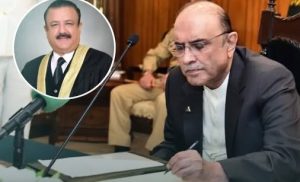Is a 5.28% growth in GDP in any given fiscal year something to rejoice about? There can be a number of ways to answer this question. Yes, it becomes something to rejoice for the national economic managers when it is the highest figure recorded in 9 consecutive fiscal years. It also indicates a continuous upward trajectory during the past four years of the tenure of the incumbent government.
But another way to answer the question is to see if the figure recorded is meeting the target set for this very number? No is the answer in this case. What no one can deny is that that the growth figure is falling short of the target it was expected to meet by the end of the fiscal year 2016-17, i.e., 5.7%. Yet another manner to make sense of it is to have a kind of regional comparison. We remain considerably short of what India next door is posting for last several years, around 7% per annum. Some other regional nations are also doing better than us.
But the overall GDP number is just one indicator, and usually not-so-correctly depicting the actual health of the economy. The tax-to-GDP ratio, the reliance on borrowed resources, worrisome performance of the export sector and resultantly widening trade deficit, the fiscal deficit and more importantly the overall current account deficit all are stark reminders of the fact that we are quite far from a point where we can actually have a sigh of relief – much less think of saying that all is well on the economic front. On some of these accounts, the government has failed miserably. And those managing the national economy have a fair idea of that.
So what kind of a budget can one expect at federal level in such a setting, particularly so when it is going to be the last full-year budgetary exercise before the next general elections become due (constitutionally, however, this very PML-N government may get another chance to present, what would be its sixth in a row, budget next year.)
Budget making, presentation and approval in Pakistan have by and large been customary exercises, rather rituals, over the years. I find little reasons to be optimistic that the coming budget, to be announced by the finance minister on Friday, May 26, on the eve of Ramzan, would in a way be a departure from this ongoing ‘tradition’ of the past.
What we can see clearly is the unfolding of an exercise aimed primarily at balancing the account books, with little out-of-the-box thinking or any bold initiatives. We can hardly expect any real move towards self-reliance and a shying away from the tendency to thrive on borrowed money, and thus borrowed time, unfortunately so.
Yes, popular the budget 2017-18 is surely going to be. And that is an important political need of the PML-N government before it goes in the electioneering mood. Do expect the doll-outs – including those to favourite industries such as textile, cement, steel, construction and allied industries etc. Concessions on taxation with regard to the import of machinery for several industries is on the cards. Salaries of the government employees are going to be raised by around 10%, and pensions would also see a notable upward revision. More importantly, we expect a sizeable increase in total allocation as well as the monthly individual allowances being given under the so-called Benazir Income Support Program (BISP). This single initiative, being continuously run by two successive governments for the past about a decade, in itself has become a very ‘creative’ way of ensuring millions of votes of the poor and desperate. Its actual socio-economic impacts may be debated; but the sad reality that millions of families have somehow been made ATM-card-carrying beggars – depending upon monthly meagre amounts instead of any comprehensive and sustainable drive to make them self-sufficient, respectable members of the society – is quite pinching.
At the macro-level, it is going to be another CPEC-focused budget. Infrastructure spending is all set to get a booster, a major one perhaps. It is being signalled that the allocation for energy sector projects may be deceased, but that may be due mainly to the fact that some of the ongoing projects are expected to come online in months ahead. An around 10% increase in the defence budget seems inevitable in the prevailing regional security situation and particularly considering that India has raised its budget just a couple of months ago.
The need of the hour is a bold budget, with across-the-board moves to ensure that every person who has a taxable income, from any source, pays what is due. That is the only way ahead to gradually get rid of the massive and unbearable burden of external and domestic debts that have accumulated dangerously high levels. CPEC indeed is a game changer in many ways but our economic managers need to understand, and then plan accordingly, that Pakistani economy is much larger than CPEC alone. The potential and prospects of such an economy call for a broad-based approach, not the one in the shape of a presently titled one, in favour of CPEC projects. Equally important is to integrate the CPEC projects and plans into overall economic planning – considering the long-term needs of the country’s economy. This is by no means to say that CPEC in any way is a less important set of projects and plans, but the point here is to highlight that every sector needs a proportionate attention and allocations.
In the nutshell, the budget-time around this time calls for something that actually strengthens the economic fundamentals of the economy and social fabric of the society. The time for cosmetic measures, what we usually see in the annual federal budget, is over for long.














